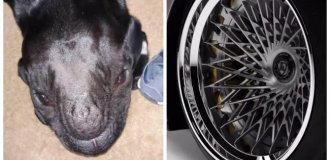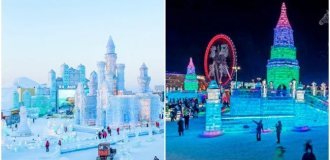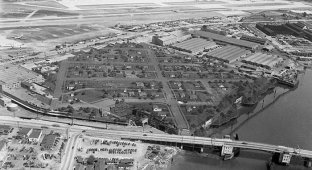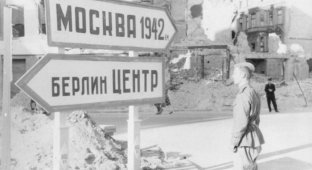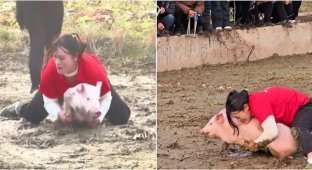It was during World War II that helmets were widely used. Whose helmets were the best? I’ll tell you why English helmets look like saucers, US helmets look like Soviet soldiers’ helmets, and German airborne helmets don’t have visors.

The German M-35 helmet, adopted for service in 1935, was rightfully considered the best example of military protective equipment by the beginning of World War II. It became a development of the German M-16 helmet, which appeared, as the name suggests, back in 1916.

The changing role of infantry in combat operations, increasing its mobility, and moving away from positional combat tactics also affected the characteristics of the helmet. It became lighter, the size of the visor and the conical backplate, which covered the ears from sound waves and fragments, were reduced. The first M-35 helmets were made of alloy carbon steel with the addition of molybdenum and could withstand pressures of up to 220 kg per mm?.

A continuation of the development of the M-35 helmet was the M-38 helmet, which had several varieties. Airborne units produced their own helmets, which had practically no brim (the wind could simply rip off the helmet, plus the wide backrests would injure the parachutist); helmets for Luftschutz air defense fighters, on the contrary, were wide-brimmed. Among collectors they were called "Gladiator".

In 1940, German helmets began to be simplified. Instead of molybdenum, manganese silicate began to be used, ventilation holes began to be made by stamping, and not in separate parts, as before. In 1942, the Germans had to abandon the alloying of steel and manganese in the manufacture of helmets, since the strategic raw material was needed for tank building. Helmets became softer, the rolling of the edges of the helmet was replaced with a simpler flange.

Hadrian's helmet
The profile of Adrian's helmet is involuntarily associated with a fireman's helmet, which is not surprising - fireman's helmets originated from Adrian's helmet. Adrian's helmet was developed during the First World War by General Auguste Louis Adrian. It was called M-15. Of French origin, Adrian's helmet was adopted as part of the equipment in many countries (including Russia, where it was in service until 1939). In France alone, 20 million helmets were made. The M-15 could not protect against direct bullet hits. Adrian's habit of wearing helmets was not easy to inculcate during the First World War. Soldiers who were not accustomed to heavy helmets often simply threw them off during battle.

In World War II, Hadrian helmets continued to be used by the French army. Their distinctive feature is a longitudinal ridge that covers the ventilation hole and serves as a stiffening rib.

USSR
The Soviet helmet SSH-40, in which the Red Army went through the entire war, and which is still the basis for the helmets of the Russian army, was accepted by Semyon Budyonny himself. First, he hit the helmet with his sword, then shot at it with a revolver. "Well done. Good job!" - that was all that remained to be said to the marshal.

Before this, the Red Army was armed with the SSh helmet (steel helmet)-36 (it was distinguished from the SSh-40 by a crest on the top) and SSh-38 (without a crest, but with wide brims that floated heavily, which caused a lot of trouble for cavalrymen) .

Allied countries
The American M-1 helmet, adopted by the US Army in 1941, replaced the M-1917 helmet, which was shaped like the English MK1 helmet. The English helmet was shaped like a plate, which is why it was jokingly called a “bowl” (Dish Pan). The wide brim of the helmet protected the soldiers of the First World War from shrapnel (according to an analysis of sanitary losses, artillery and shrapnel accounted for up to 45-50% of all losses on the Western Front).

The M-1 helmets did not look like saucers, but were similar to the Soviet SSh-40 helmets. They were made from Hadfield manganese steel. By September 1945, more than 22 million had been produced.

During World War II, the British used a modification of the already mentioned helmet MK1 - MK2, and then MK3. The shape of English helmets still resembled plates, but with smaller brims than in the First World War.

Comfort and camouflage
Under the helmet there is not only the head, but also a subtotal device. The fighter’s comfort depends on it. Designing it to be comfortable was no less important task for military designers than creating the helmet itself. The Germans were especially successful in designing balaclavas. Their M-38 landing helmets had complex liners with rubber segments that securely held the helmet on the head.

In the Soviet SSh-40 helmet, the under-tissue device consisted of three petals connected at the top by an adjusting cord. On the inside, each petal had a cotton pad that improves shock absorption.

During World War II, camouflage also became important. Helmets, as part of the protective equipment, were also camouflaged - painted and covered with camouflage elements attached to nets and under rubber from car tires.

